A diamond’s carat is one of its essential qualities. As diamonds increase in size, they become increasingly rare and valuable. Due to its natural scarcity, the larger the diamond, the more expensive it will be. Diamonds of one carat or greater are often called “solitaire” stones because they are large enough to stand alone without accent stones.
In addition to size, carats also refer to the diamond’s purity or clarity—a higher carat number typically indicates a purer stone with fewer visible flaws. Although two diamonds may have similar measurements and carat weights, their values can vary greatly depending on other factors such as color and cut quality. However, when shopping for diamonds, it is essential to remember that larger stones represent more value for your money when compared with smaller stones of similar quality and characteristics.
How to Tell How Many Carats a Diamond Is?
To tell how many carats a diamond is, you need to measure the weight of diamonds in grams. One diamond carat weighs 0.2 grams. Diamond carats measure the weight of diamonds and determine their value. Generally, the more a diamond’s carat is, the higher its worth.
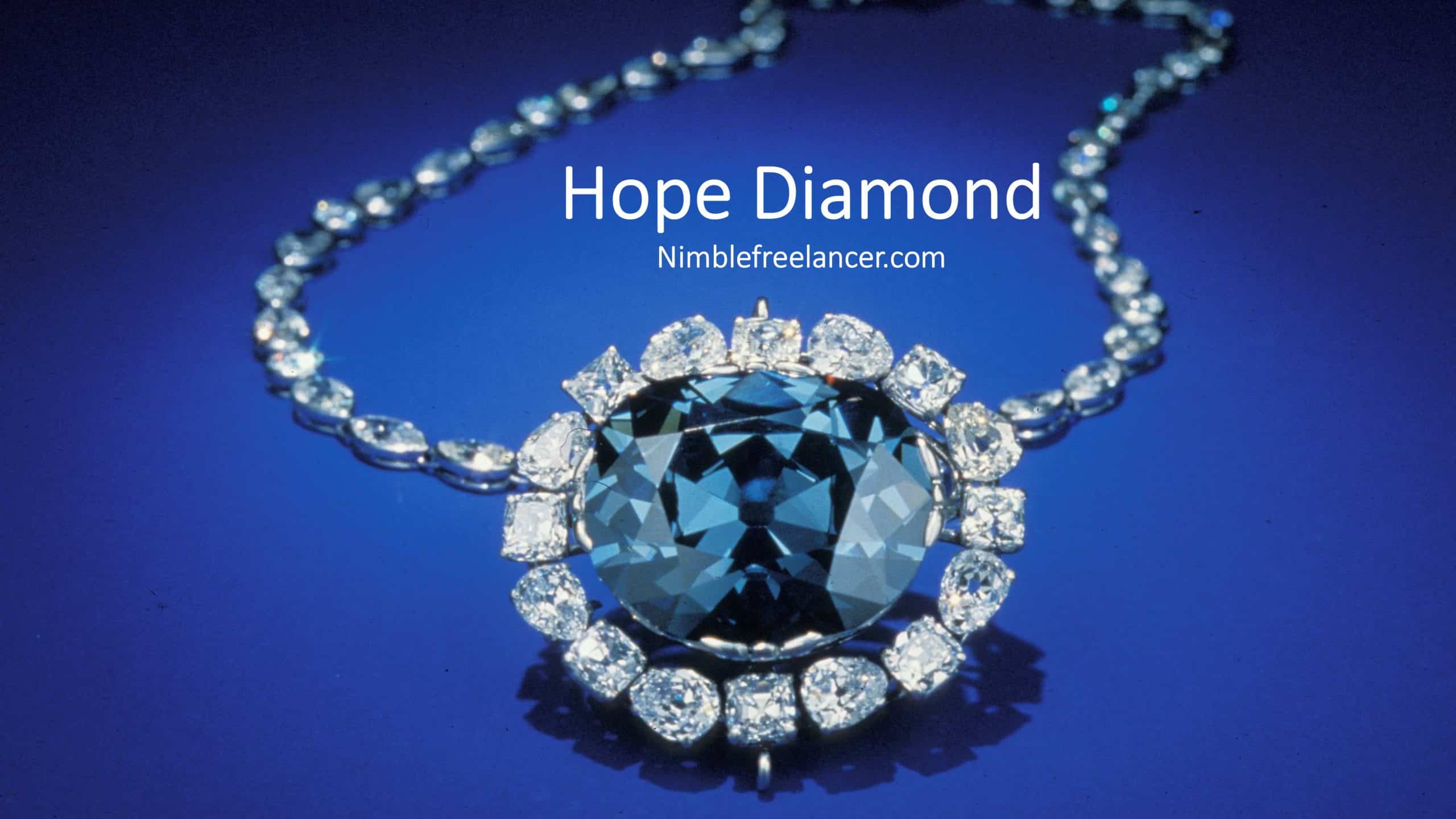
Read more about CTTW Diamonds in our article.
Carats are measured by units corresponding to the weight of a tiny seed from the carob tree. The name of this measurement comes from the Greek word (καράτι), which means carob bean. A single unit is a ‘point,’ which equals 1/100th of a carat. Therefore, one carat is equal to 100 points. If two diamonds have the same shape, color, and clarity but different weights, they will have different diamond carats and, therefore, various prices.
The size of a diamond isn’t always indicative of its value, with small diamonds often being pricier than larger ones due to their overall quality or rarity in some cases. For instance, a 0.50-carat diamond may be costly if it has an excellent cut grade or is rarer than larger diamonds with lower quality grades such as clarity or color.
The 4Cs grading system developed by GIA (Gemological Institute of America) helps set diamond prices by measuring each stone’s color, cut, clarity, and carat weight to determine its value. These measurements assign each stone a certification that includes all four Cs factors, helping buyers evaluate any given diamond more accurately when comparing different stones in their decision-making process.
Furthermore, besides measuring size and weight, another meaning is attributed to “carats” about gold purity: 24-karat gold refers to pure gold (24 parts out of 24 parts are pure gold). Although both meanings imply great importance when purchasing jewelry or coins made of gold or diamonds, they should not be confused since they represent two independent concepts.
Diamond Weighing Scales
Diamond weighing scales are highly advanced tools used to measure the weight of diamonds with extreme precision. Their unique design enables them to accurately weigh these tiny, delicate stones without damaging them.
The scales are made from robust, lightweight material. They feature a flat top surface and two arms extending from the base. The two arms hold the diamond in place for accurate measurements. The scales also contain sensors to detect the stone’s weight and display it on an easy-to-read digital screen.
The unique design of diamond weighing scales makes them ideal for diamond traders who must ensure accuracy when buying and selling diamonds. These devices offer a level of accuracy that is much greater than traditional balances or other measuring devices. This ensures that customers get precisely what they pay for and that traders can guarantee their correct measurement before exchanging deals.
Remember, diamond weighing scales measure diamond weight where 0.2 grams is 1 carat.
In addition, diamond weighing scales offer a more user-friendly experience than other instruments, such as gemmologists’ microscopes, which require additional training and knowledge to use correctly. Using these scales is also much more accessible than counting individual carats on each stone, which would be time-consuming and difficult without the right tools. With this device, you can quickly obtain accurate measurements while protecting your stones from damage at the same time.
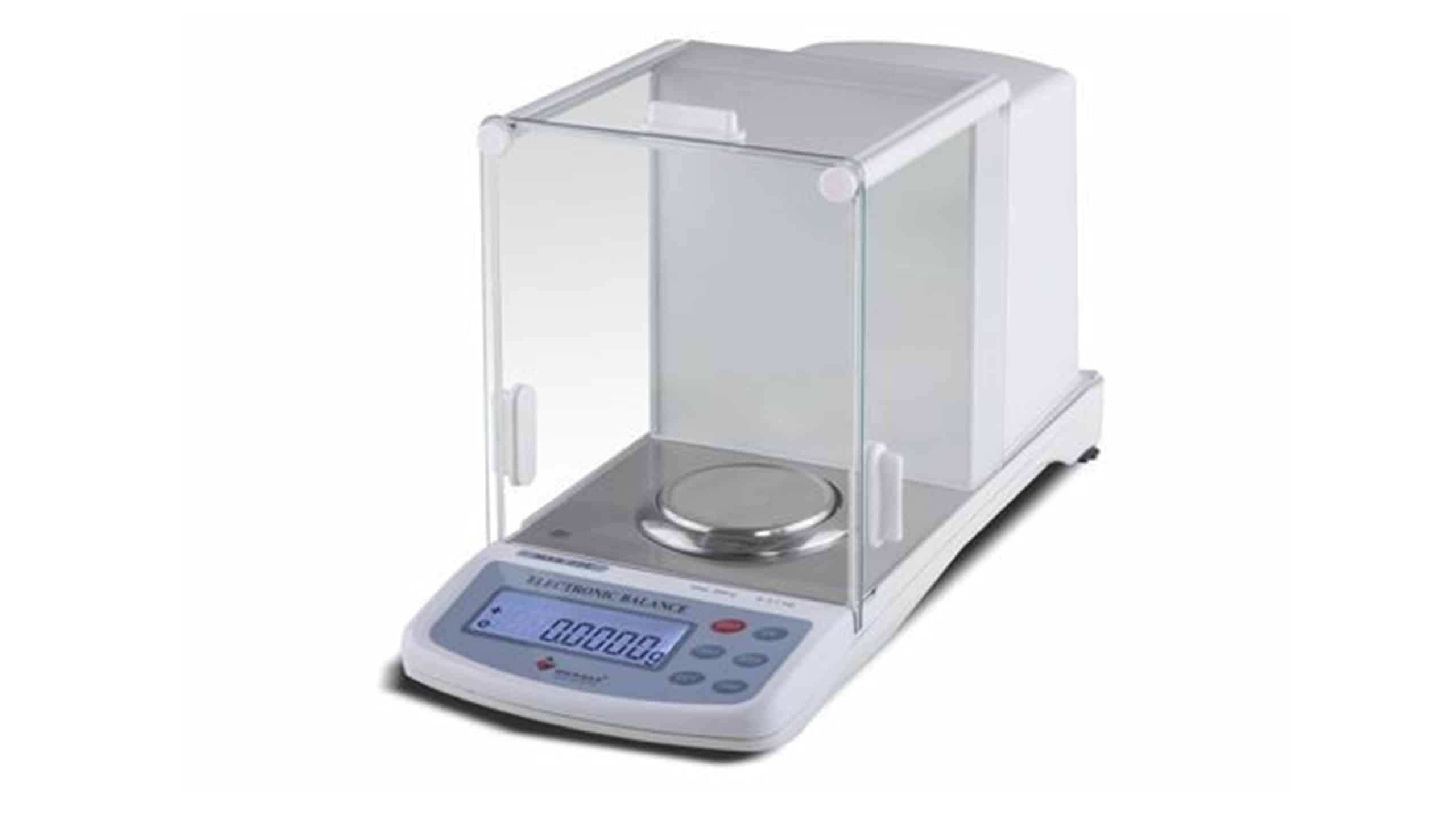
When shopping for diamond weighing scales, there are certain key features you should look out for, such as accuracy range (measured in milligrams/carat), ease of use, build quality (ensuring it won’t break easily), and display readability (for providing precise readings). You may also want to consider getting an adjustable arm to easily measure multiple stones and a vibration-dampening system so that any minor movement won’t disrupt your readings. Overall, purchasing one of these advanced devices will provide peace of mind, knowing you’re getting accurate weights for all your diamonds every time!
How do you estimate carat weight without a scale?
But how do you accurately determine the carat weight of a diamond without a scale? The answer may surprise you: there are several methods for estimating the carat weight of a diamond without having to use specialized equipment or tools. Here, we’ll explore famous and influential carat weight estimation methods.
Estimating Carat Weight Using Visual Comparison
The simplest method for estimating the carat weight of a round diamond is by visual comparison with other diamonds of known weights. This involves comparing your diamond’s size, shape, and appearance with other diamonds with known weights. For this method to work effectively, all diamonds compared must be cut in identical conditions and sizes; any differences in depth or width can lead to inaccurate conclusions. Furthermore, any blemishes on either diamond will significantly impact accuracy as they will affect the perceived size of your diamond.
For example, I will show you the shape of the round diamond in the carats of the diamond scale image below:
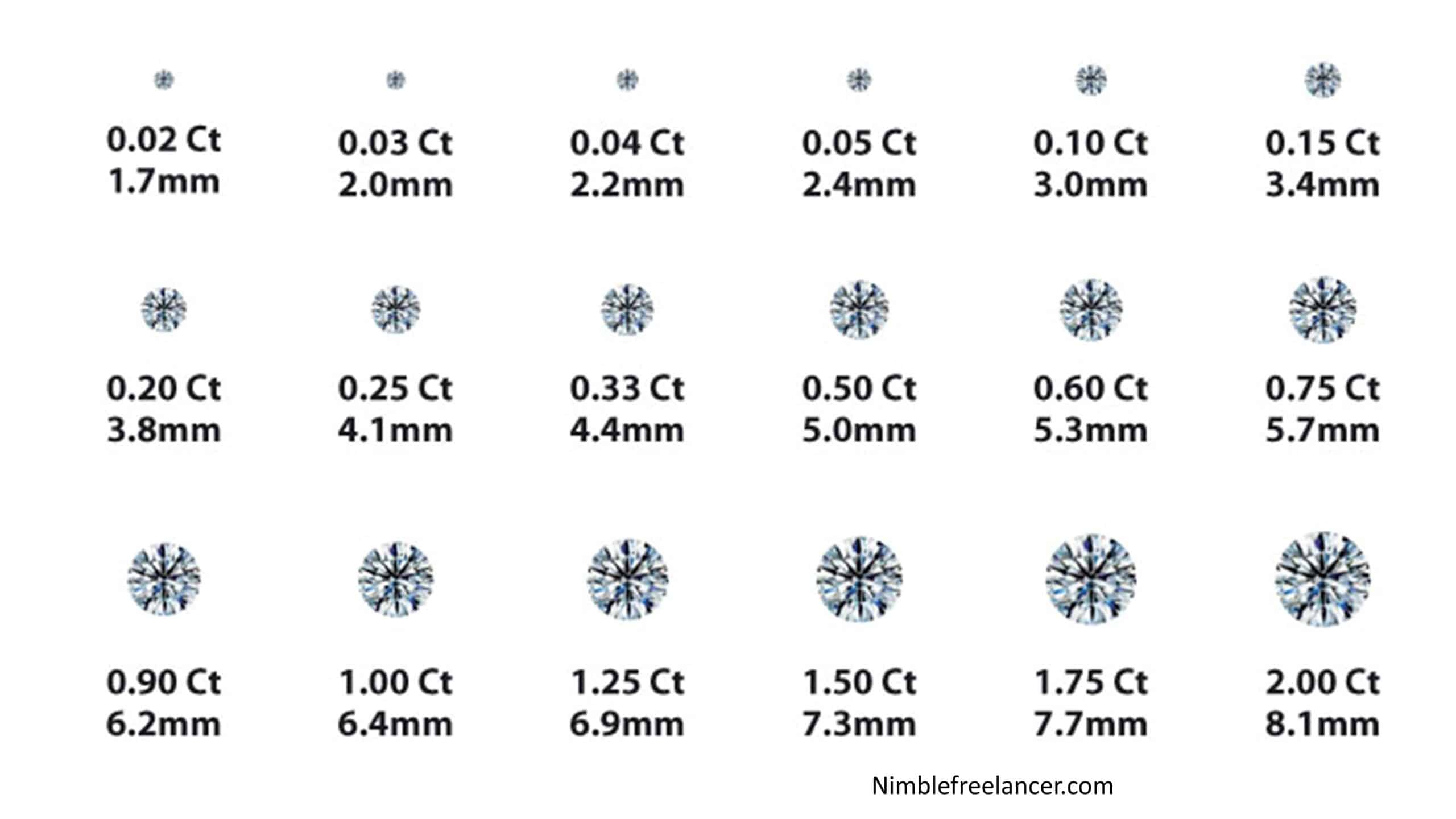
Using Graphs and Charts
Another popular method for estimating carat weight is using graphs and charts provided by gemological laboratories or professional jewelers. These charts can help you compare your diamond’s diameter (in millimeters) with its estimated weight range (in carats). To ensure a more accurate estimate, it helps to measure your round diamond accurately; this measurement should include its diameter and depth from the culet to the tabletop.
Additionally, using these charts, we can analyze cut, clarity, color, and carats like in the image below:
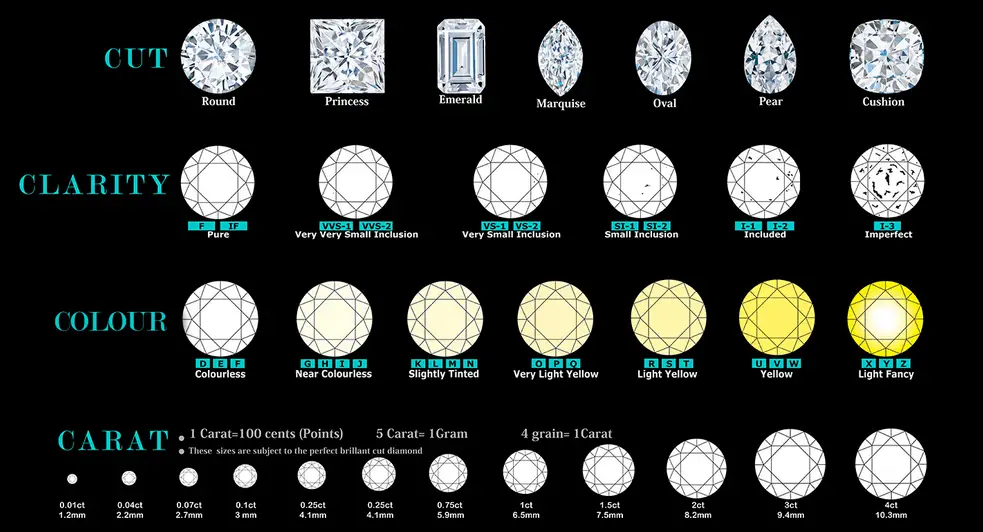
For those unfamiliar with graphs or charts – such as amateur collectors – measuring table size and crown height can also provide an accurate estimate of the carat weight. Table size refers to the most significant flat facet at the top midpoint of the stone; when combined with crown height (distance between the table facet and culet), this data can be used to determine estimated carats quickly and effectively. It’s important to note that these measurements should be made in millimeters rather than inches for higher precision when entering calculation formulas.
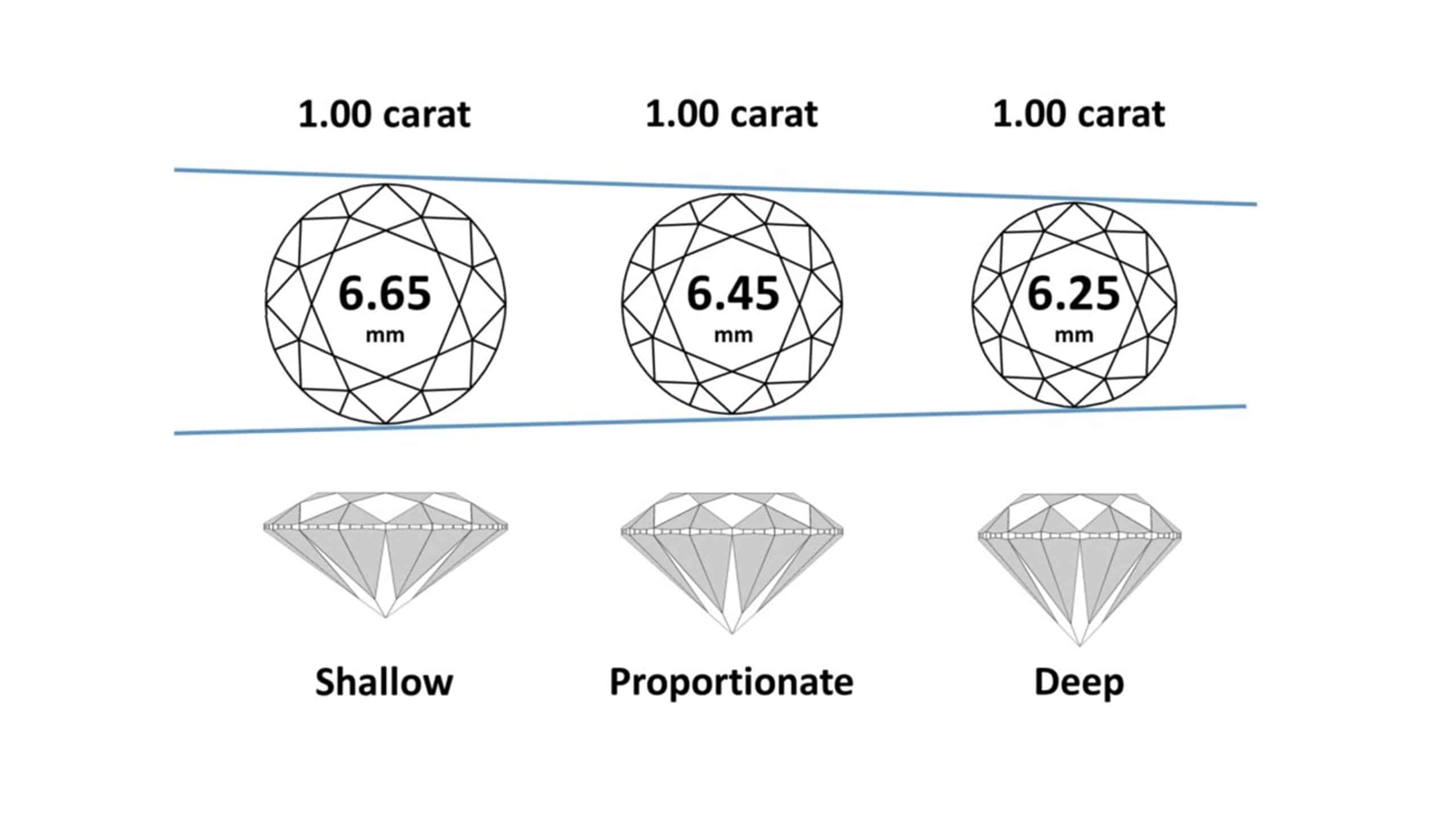
Estimate carat size using mathematical formulas.
I will tell you one thing – you can calculate the number of carats using various formulas.
Please below you can see all diamond carat formulas for various types of diamonds:
- Round Brilliant: Approximate Estimated Diamond Carat Weight = Diameter2 × Depth × 0.0061 × GTF
Oval: Approximate Estimated Diamond Carat Weight = Diamond Length × Diamond Width × Depth × 0.0062 × GTF × WCF
Princess Diamond Cut: Approximate Estimated Diamond Carat Weight = Diamond Length × Diamond Width × Depth × 0.0083 × GTF × WCF - Asscher Diamond Cut: Approximate Estimated Diamond Carat Weight = Diamond Length × Diamond Width × Depth × 0.0080 × GTF × WCF
- Cushion Diamond Cut: Approximate Estimated Diamond Carat Weight = Diamond Length × Diamond Width × Depth × 0.00815 × GTF × WCF
- Heart: Approximate Estimated Diamond Carat Weight = Diamond Length × Diamond Width × Depth × 0.0059 × GTF × WCF
Baguette: Approximate Estimated Diamond Carat Weight = Diamond Length × Diamond Width × Depth × 0.00915 × GTF × WCF - Trillion Diamond Cut: Approximate Estimated Diamond Carat Weight = Diamond Length × Diamond Width × Depth × 0.0057 × GTF × WCF
- Emerald Diamond Cut: Approximate Estimated Diamond Carat Weight = Diamond Length × Diamond Width × Depth × Adjustment Factor × GTF × WCF
Diamond Length to Diamond Width Ratio = 1.00 : 1.00, Adjustment Factor = 0.0080
Diamond Length to Diamond Width Ratio = 1.50 : 1.00, Adjustment Factor = 0.0092
Diamond Length to Diamond Width Ratio = 2.00 : 1.00, Adjustment Factor = 0.0100
Diamond Length to Diamond Width Ratio = 2.50 : 1.00, Adjustment Factor = 0.0106
- Radiant Diamond Cut: Approximate Estimated Diamond Carat Weight = Diamond Length × Diamond Width × Depth × Adjustment Factor × GTF × WCF
Radiant Diamond Length to Diamond Width Ratio = 1.00 : 1.00, Adjustment Factor = 0.0081
Radiant Diamond Length to Diamond Width Ratio = 1.50 : 1.00, Adjustment Factor = 0.0084
- Marquise Diamond Cut: Approximate Estimated Diamond Carat Weight = Diamond Length × Diamond Width × Depth × Adjustment Factor × GTF × WCF
Marquise Diamond Length to Diamond Width Ratio = 1.50 : 1.00, Adjustment Factor = 0.00565
Marquise Diamond Length to Diamond Width Ratio = 2.00 : 1.00, Adjustment Factor = 0.00580
Marquise Diamond Length to Diamond Width Ratio = 2.50 : 1.00, Adjustment Factor = 0.00585
Marquise Diamond Length to Diamond Width Ratio = 3.00 : 1.00, Adjustment Factor = 0.00595
- Pear: Approximate Estimated Diamond Carat Weight = Diamond Length × Diamond Width × Depth × Adjustment Factor × GTF × WCF
Diamond Length to Diamond Width Ratio = 1.25 : 1.00, Adjustment Factor = 0.00615
Diamond Length to Diamond Width Ratio = 1.50 : 1.00, Adjustment Factor = 0.00600
Diamond Length to Diamond Width Ratio = 1.66 : 1.00, Adjustment Factor = 0.00590
Diamond Length to Diamond Width Ratio = 2.00 : 1.00, Adjustment Factor = 0.00575
Where GTF = Girdle Thickness Factor, WCF = Weight Correction Factor.
Finally, traditional weighing scales can always be used to measure small objects like gems and jewelry. This requires unique scales calibrated precisely for weighing small stones—available at most jewelry retail stores—which offer high levels of accuracy while providing real-time numerical data rather than estimated values like all the other methods mentioned above. These scales are typically quite expensive, so they may not be cost-effective unless you own a lot of diamonds or need extremely accurate numbers regularly.
Conclusion
In conclusion, various methods are available for estimating a round diamond’s carat weight without requiring specialized tools or instruments, ranging from visual comparison techniques that rely on keen eyesight to digital scales explicitly designed for measuring small stones like gems and jewelry pieces. Ultimately, it depends on what kind of accuracy you require and how much effort or money you’re willing to invest into getting that result – but now that you know some basic methods available, hopefully, deciding what works best for you won’t be too tricky!
To learn more about diamonds, please read our articles:
Do Lab-Grown Diamonds Hold Their Value?
How to Tell How Many Carats a Diamond Is?
How Much is 1 Carat Diamond Worth?
How Much is a 3-Carat Diamond Ring?





